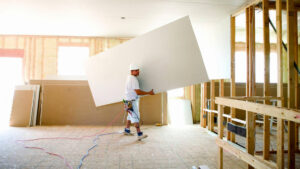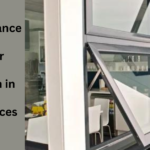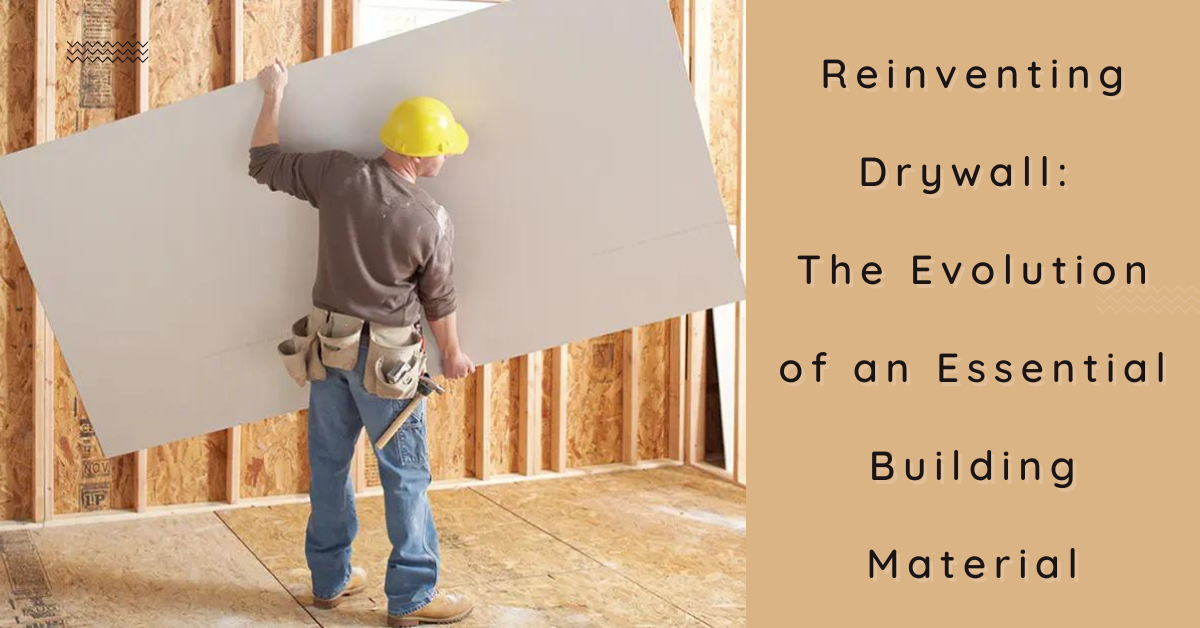Introduction:
There are few materials that have played a greater role in the realm of construction and interior design than drywall. With its versatility, affordability, and ease of installation, drywall has become the go-to choice for walls and ceilings in residential and commercial buildings. However, recent innovations in drywall technology have expanded its horizons, transforming it from a simple construction component into a multi functional and sustainable building material.
It is important to recognize the importance of drywall when it comes to interior construction. This unassuming material plays a pivotal role in shaping the look, feel, and functionality of our living and working spaces. In this article, we explore the fascinating evolution of drywall, examining its new capabilities and the impact it is making on the construction industry.
Traditional Drywall: The Foundation:
Drywall, also known as gypsum board or plasterboard, has been a staple in construction since its invention in the early 20th century. Composed of a gypsum core sandwiched between two layers of paper, it offered a lightweight, fire-resistant, and mold-resistant alternative to traditional plaster and lathe walls. Its affordability and quick installation made it a game-changer in the industry, leading to its widespread adoption.
Acoustic Drywall: Silencing the Noise:
One of the most significant advancements in drywall technology is the development of acoustic drywall. Engineered with sound-dampening properties, this type of drywall is designed to minimize noise transmission between rooms and from external sources. It has found particular relevance in environments where noise control is critical, such as theaters, recording studios, and residential spaces where privacy is valued. Acoustic drywall has opened up new possibilities for creating quiet and comfortable spaces, enhancing the overall quality of life. From residential home maintenance to commercial establishments, drywall has emerged as the go-to solution for creating visually appealing, structurally sound, and customizable interior surfaces.
Moisture-Resistant Drywall: Defying Dampness:
Moisture-resistant drywall, commonly known as green board or blue board, has revolutionized the construction of areas prone to moisture, such as bathrooms, kitchens, and basements. It features a unique formulation that prevents mold and mildew growth, unlike standard drywall. Its innovative composition and waterproofing properties ensure longevity, durability, and a healthy indoor environment, making it an invaluable addition to modern construction practices.
Fire-Resistant Drywall: Protecting Lives and Property:
Fire-resistant drywall, also referred to as Type X drywall, has become an essential element in building safety. A fire-resistant core can withstand high temperatures and slow down the spread of flames. This provides valuable time for evacuation and firefighting efforts. This specialized drywall is a testament to the industry’s commitment to enhancing the safety and security of buildings, protecting lives, and minimizing property damage in the event of a fire.
Sustainable Drywall: Building Green:
With increasing focus on sustainability in construction, drywall manufacturers have made significant strides in developing eco-friendly alternatives. There are now companies that produce drywall made from recycled materials, thus reducing the demand for virgin resources and minimizing waste. In addition, manufacturers are developing energy-efficient manufacturing processes and exploring ways to reduce the impact of drywall production on the environment. These sustainable initiatives contribute to a greener future for the construction industry, aligning with the global push for more environmentally responsible practices. You may also visit answertenant for more information.
The unique features and benefits shedding light on its versatility and elegance as a modern interior solution are as following:

The Basics
A drywall panel is a panel of gypsum plaster sandwiched between two layers of heavy paper, also known as plasterboard, gypsum board, or Sheetrock. A variety of thicknesses and sizes are available to suit a variety of construction requirements. The primary advantage of drywall lies in its ease of installation, repair, and versatility.
Versatility in Design
It serves as a blank canvas for interior designers, allowing for endless possibilities in terms of aesthetic appeal. With its smooth surface, drywall provides a seamless and polished look, providing the perfect backdrop for a wide range of decorative finishes. Whether it’s a minimalist contemporary style or a classic vintage theme, it can adapt to suit any design preference.
Customization and Flexibility
One of the standout features is that is its ability to be easily customized. A variety of architectural elements and design requirements can be accommodated by cutting, bending, and molding it. From arches and curves to intricate patterns and niches, drywall empowers designers and architects to bring their creative visions to life. This flexibility is a game-changer, allowing for the creation of truly personalized and extraordinary spaces.
Acoustic and Fire Resistance
In addition to its aesthetic qualities, it offers practical benefits. When enhanced with additional insulation materials, it becomes an excellent sound barrier, reducing noise transmission between rooms and floors. This makes it an ideal choice for both residential and commercial settings, ensuring privacy and comfort.
Moreover, it exhibits impressive fire-resistant properties. The gypsum core within the panels acts as a natural fire barrier, helping to contain the spread of flames and providing valuable time for evacuation and firefighting efforts. As a result, it contributes to the overall safety of a building and provides peace of mind to occupants.
Energy Efficiency
It can contribute to energy efficiency by incorporating insulation materials that help regulate temperature and reduce energy consumption. By providing an additional thermal barrier, it aids in maintaining comfortable indoor environments while minimizing the need for excessive heating or cooling. This energy-saving aspect of drywall aligns with sustainable design practices, making it a preferred choice for environmentally conscious projects.
Durability and Maintenance
It is designed to withstand the test of time. Its robust construction ensures durability and longevity, reducing the need for frequent repairs or replacements. Furthermore, routine maintenance is relatively straightforward, involving simple tasks such as patching holes, sanding, and repainting. With proper care, it can maintain its pristine appearance for years to come.
Conclusion
It is more than just a building material; it is an essential component of modern interior design. Its versatility, elegance, and numerous practical benefits make it a popular choice among homeowners, contractors, and architects alike. From creating visually stunning surfaces to enhancing acoustic performance and fire safety, it continues to shape the way we inhabit and experience our living and working spaces. So, the next time you admire a beautifully finished interior, remember that drywall played a significant role in making it possible.












